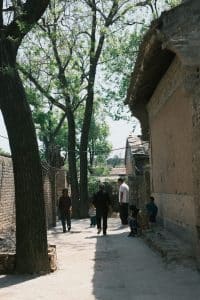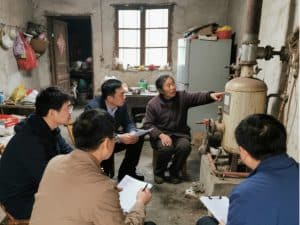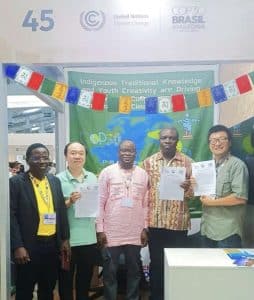In support of China’s national “dual-carbon” strategy and the modernization of energy use in agricultural and rural areas, the China Rural Development Foundation (CRDF) launched the Rural Low-Carbon Emission Reduction Project in 2024. Piloted in Qinghe and Nileke counties in Xinjiang, the project targets three essential household energy areas: heating, cooking, and lighting. Alongside clean energy upgrades, the initiative incorporates emission reduction monitoring and low-carbon education to raise villagers’ carbon literacy and explore innovative pathways for rural revitalization aligned with China’s carbon peaking and neutrality goal.

Tackling Traditional Energy Dependence: A Rural Low-Carbon Model
The harsh winters in northern Xinjiang—where temperatures in Qinghe and Nileke counties can fall to –40 °C and –30 °C—make reliable heating an essential need. However, most rural households still depend on traditional coal-burning stoves and boilers, which require frequent manual refueling and provide uneven heating.
“Coal‑fired boilers require us to get up at night to add fuel, or the house becomes freezing. It’s very inconvenient. Plus, the smoke from burning coal affects the health of the elderly and children,” shared a resident of Kajanggtohai village during a household survey.
Beyond these inconveniences, burning low-grade coal is highly inefficient and pollutes the air with sulfur dioxide, nitrogen oxides, and other harmful emissions. The risk of carbon monoxide poisoning and the environmental impact of coal ash further underscore the dual safety sustainability challenges posed by traditional heating methods.

Clean Energy Interventions and Local Collaboration
To help break this cycle of energy dependence and accelerate the green transformation of rural areas, the China Rural Development Foundation partnered with the Chengdu Institute of Biogas Science under the Ministry of Agriculture and Rural Affairs to launch the Rural Low-Carbon Emission Reduction Project.
To help break this cycle of energy dependence and accelerate the green transformation of rural areas, the China Rural Development Foundation partnered with the Chengdu Institute of Biogas Science under the Ministry of Agriculture and Rural Affairs to launch the Rural Low‑Carbon Emission Reduction Project.
From April 21–28, 2025, project teams and experts conducted field assessments in both counties, gathering data on current heating, lighting, and cooking practices. Local Kazakh officials assisted as interpreters, helping the research team communicate effectively during household visits. The surveys revealed a high level of reliance on bulk coal and a strong desire among villagers to adopt cleaner alternatives.
The project is anchored on two core pillars: equipment modernization and community education. Participating households are receiving cleaner, more efficient energy technologies. For instance, village homes were equipped with solar powered garden lamps, LED lighting systems, and energy-saving appliances such as induction cookers or liquefied petroleum gas (LPG) stoves.
To support the long-term adoption of these upgrades, CRDF has partnered with technical experts and local stakeholders to conduct community workshops. These training sessions cover energy saving practices, the health benefits of reducing indoor air pollution, and the importance of environmental protection.

Empowering Carbon Literacy and Sustainable Living
To help embed low-carbon thinking into everyday life, the project team has already hosted several training seminars across local communities. Villagers learned how adopting a low‑carbon lifestyle can reduce living costs, protect household health, and help mitigate climate change.
One farmer from Kajanggtohai expressed relief over the shift from coal to electricity: “In winter, no more coughing from coal smoke, and we no longer need to get up at night to add fuel. It’s a real improvement to our quality of life.”

A Scalable Path Forward
Once fully implemented, this pilot project will not only transform the local energy landscape but also offer a replicable model for clean energy adoption in rural northern China. By combining clean technology deployment with awareness-building, the Rural Low‑Carbon Emission Reduction Project advances revitalization, contributes to China’s national carbon‑neutrality goals, and promotes healthier, more sustainable living in rural communities.



